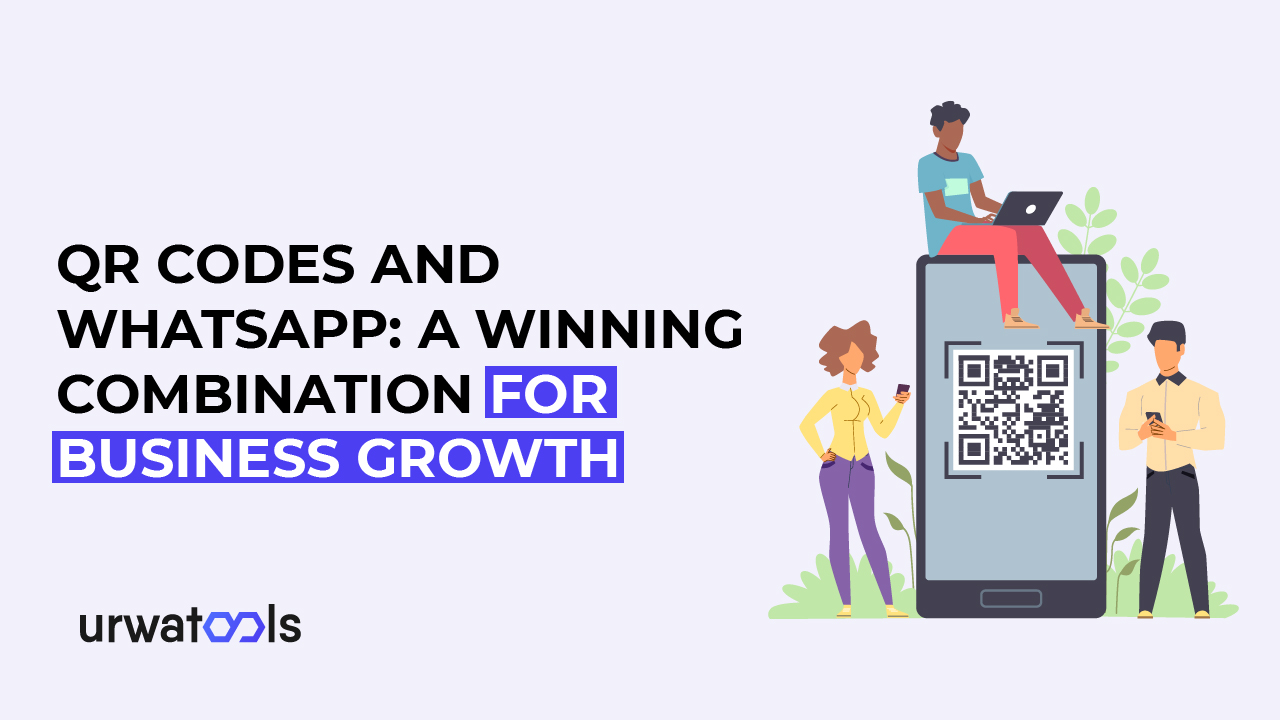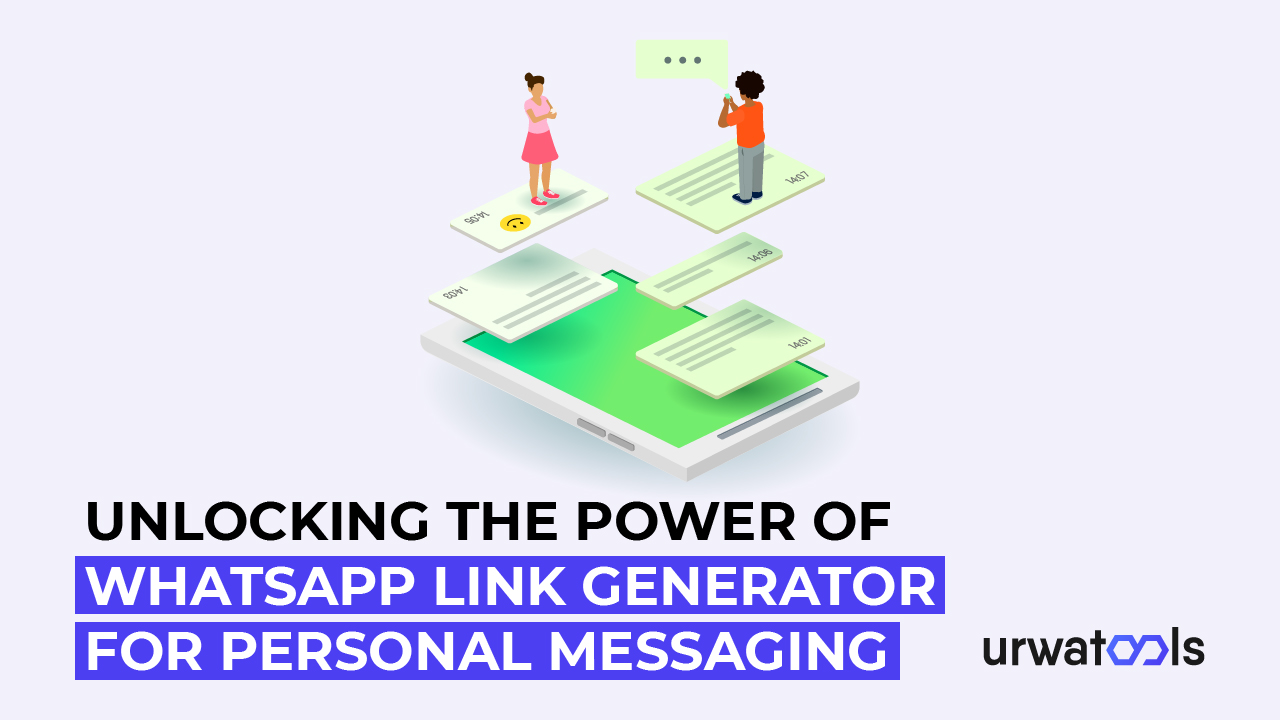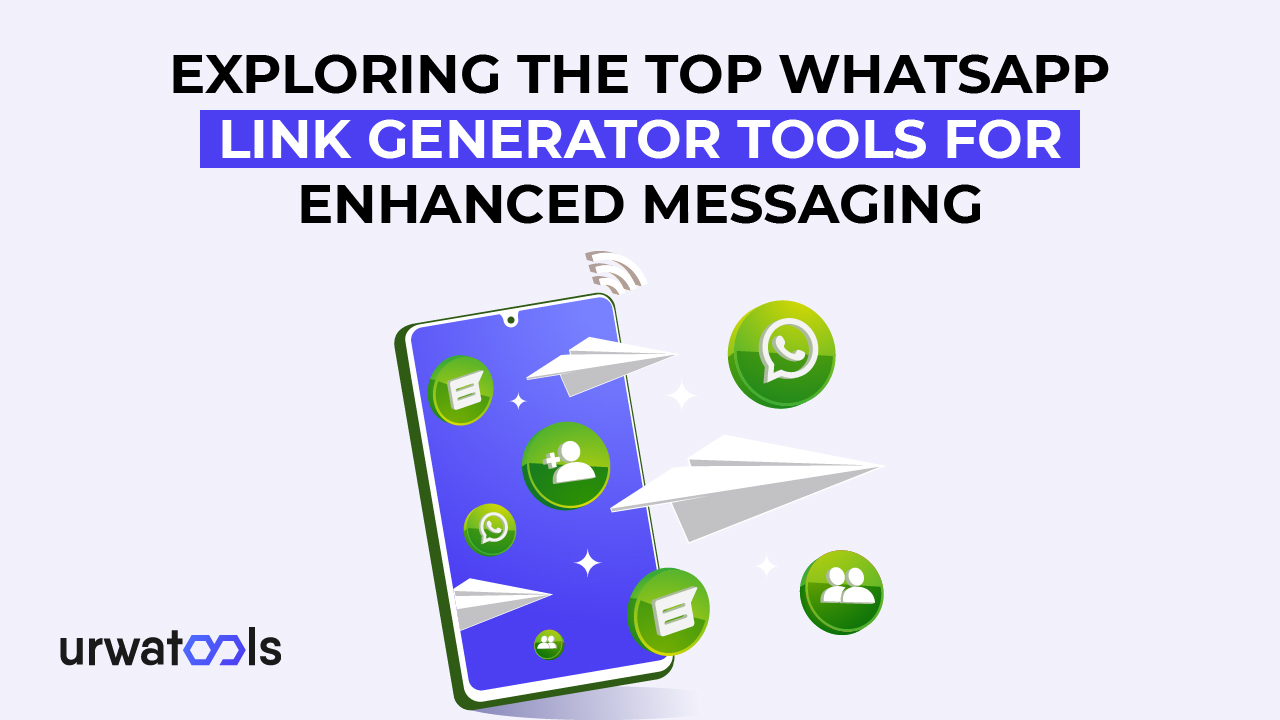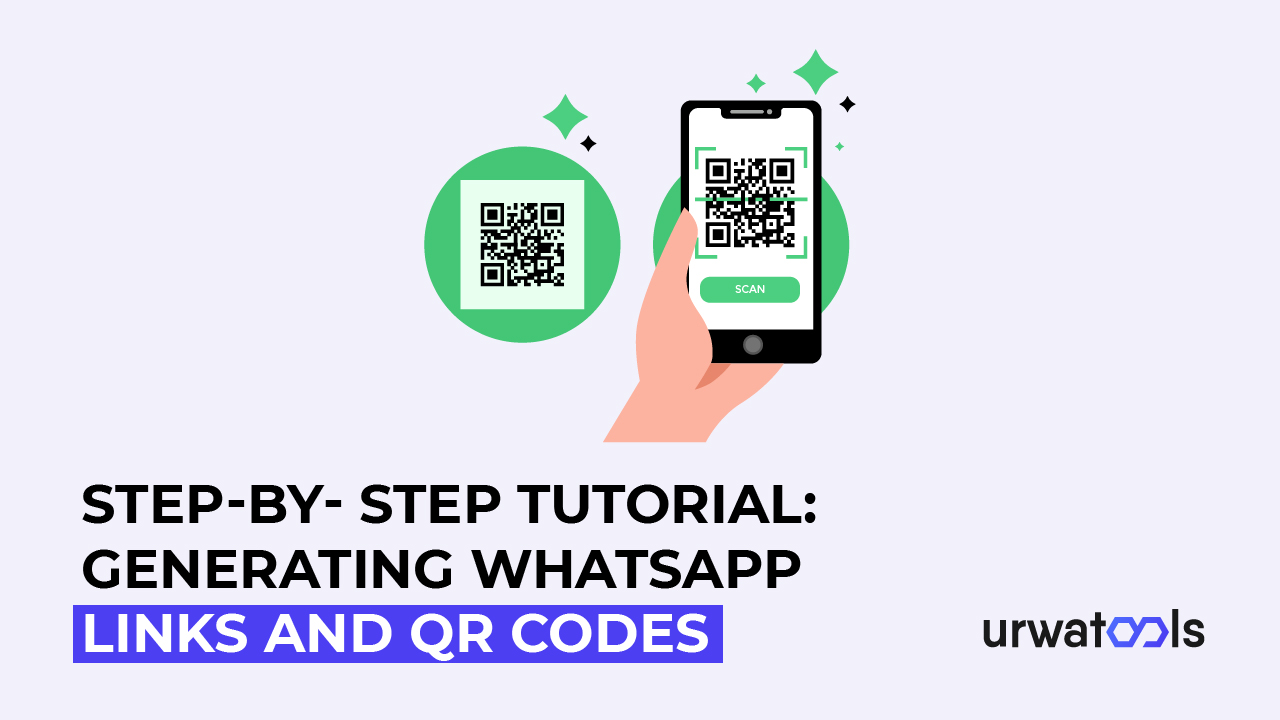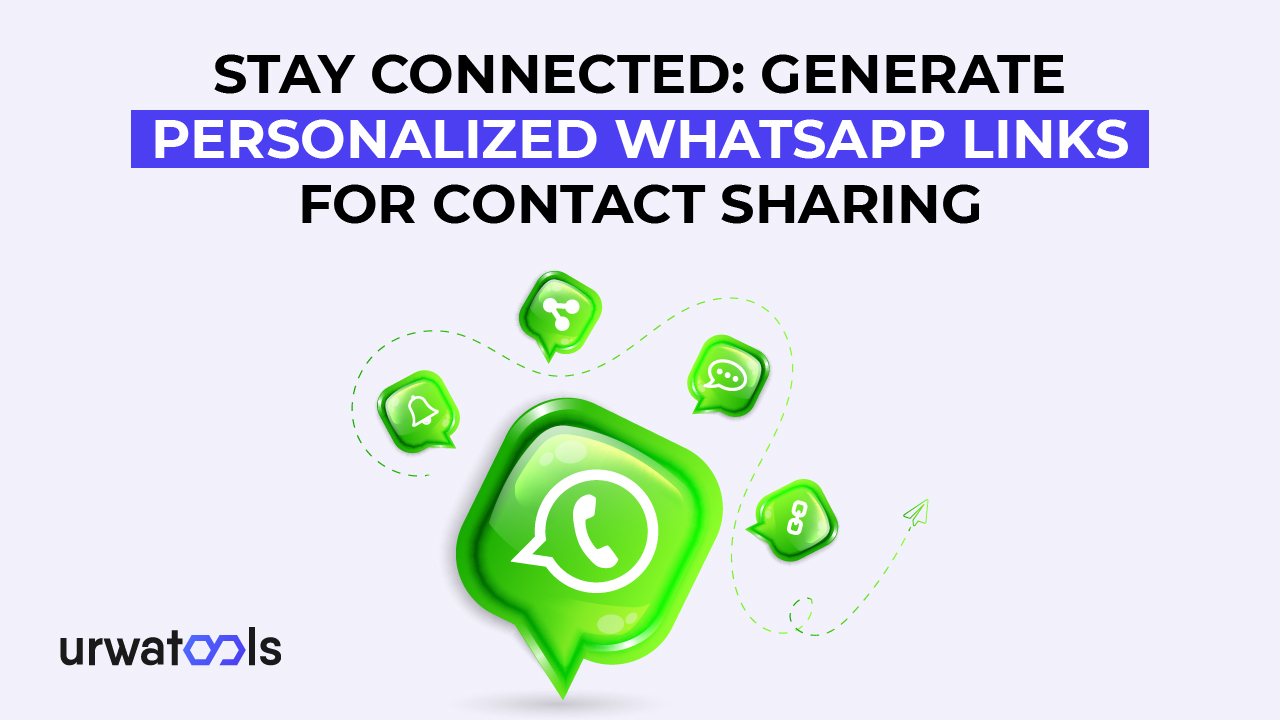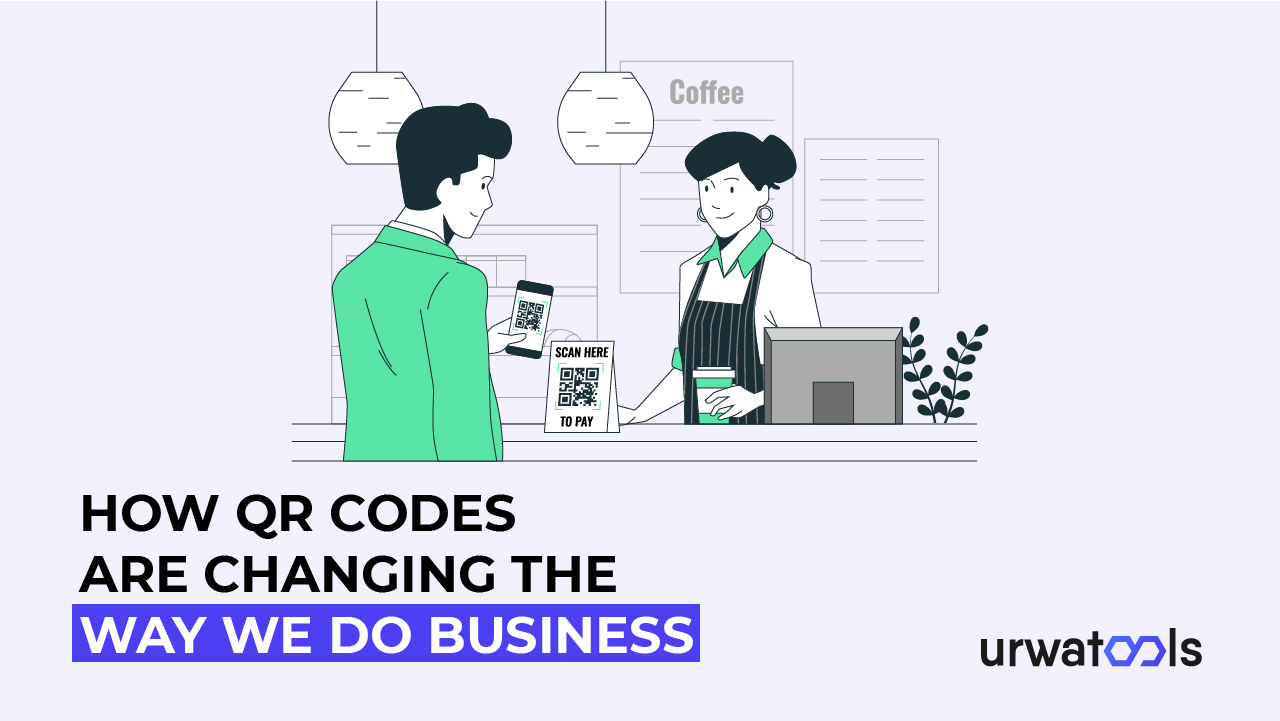Компании в современном цифровом мире постоянно ищут творческие методы для охвата своей целевой аудитории и расширения. QR-коды стали известны как гибкий маркетинговый инструмент. В то же время WhatsApp превратился в глобальную платформу обмена сообщениями с более чем двумя миллиардами активных пользователей. При объединении этих двух мощных технологий компании могут открыть для себя различные варианты развития и взаимодействия. В этой статье мы рассмотрим, как QR-коды и WhatsApp хорошо работают друг с другом и как компании могут использовать их в своих интересах.
1. Введение
Компании, работающие в цифровой сфере, всегда стремятся привлечь свою аудиторию. QR-коды, двухмерные штрих-коды, которые можно считывать с помощью камер смартфонов, стали эффективным инструментом для связывания физической и цифровой сфер. С другой стороны, WhatsApp изменил то, как люди общаются, предложив мгновенный обмен сообщениями, голосовые звонки, видеозвонки и другие функции. Компании могут создать плавный и привлекательный клиентский опыт, объединив QR-коды и WhatsApp.
2. Понимание QR-кодов
В последние годы QR-коды, или коды быстрого реагирования, стали популярными инструментами для соединения реальных и цифровых встреч. Эти квадратные штрих-коды представляют собой черные модули, организованные на белом фоне, и могут содержать различные данные. Они могут мгновенно обеспечить доступ к веб-сайтам, контактным данным, информации о продуктах и т. д. при сканировании с помощью камеры смартфона или специального приложения для сканирования QR-кодов.
I. Структура QR-кода:
QR-коды могут появляться в виде случайных узоров из черно-белых модулей. Однако каждый QR-код имеет индивидуальную структуру, которая правильно хранит и передает информацию. Давайте рассмотрим структуру QR-кода:
1. Шаблоны поиска: огромные квадраты в верхнем левом, верхнем правом и нижнем левом углах QR-кода. Они помогают сканерам идентифицировать и ориентировать код.
2. Выравнивающие узоры: Эти маленькие квадраты находятся близко к узорам искателя. Они помогают сохранить целостность QR-кода при сканировании и декодировании.
3. Временные шаблоны: Эти горизонтальные и вертикальные ряды чередующихся черных и белых модулей помогают определить размер и ориентацию QR-кода.
4. Область данных: Закодированные данные хранятся в этой области, которая может варьироваться в зависимости от типа сохраняемой информации. Область данных состоит из черно-белых модулей, которые кодируют данные в заданном формате.
5. Тихая зона: Тихая зона — это белое пространство вокруг QR-кода. Это помогает сканерам отличать код от окружающей среды и обеспечивает точное сканирование.
II. Виды QR-кодов:
QR-коды бывают разных типов, каждый из которых предназначен для определенных целей. Вот несколько распространенных типов QR-кодов:
1. URL-QR-коды: Эти QR-коды содержат URL-адрес веб-сайта. Они направляют посетителей на определенную веб-страницу при сканировании.
2. Текстовые QR-коды: текстовые QR-коды кодируют обычный текст. Они могут хранить такую информацию, как контактная информация, сообщения или другие текстовые данные.
3. QR-коды по электронной почте: QR-коды электронной почты шифруют адреса электронной почты. Пользователи могут составить электронное письмо сразу на закодированный адрес после его сканирования.
4. QR-коды VCard: QR-коды VCard используют формат vCard для кодирования контактной информации. Их сканирование добавляет контактную информацию в адресную книгу пользователя.
5. QR-коды для платежей: эти коды позволяют быстро и легко совершать платежи. Они шифруют платежные данные, такие как информация об учетной записи получателя или конкретная сумма платежа.
III. Применение QR-кода:
QR-коды имеют множество применений в различных отраслях. Давайте рассмотрим некоторые распространенные варианты использования.
1. Маркетинг и реклама: QR-коды обычно используются в маркетинговых усилиях, чтобы предоставить клиентам быстрый доступ к рекламным предложениям, скидкам и дополнительной информации о продуктах. Сканирование кода перенаправляет потребителей на соответствующие посадочные страницы или позволяет им напрямую взаимодействовать с брендом.
2. Упаковка продукта: Клиенты могут получить полную информацию о продукте, руководства пользователя или регистрацию гарантии, отсканировав QR-коды на упаковке продукта. Они улучшают потребительский опыт и делают ценные материалы более доступными.
3. Управление мероприятиями: QR-коды упрощают действия по управлению мероприятиями, такие как покупка билетов и регистрация. Посетители могут сканировать свои QR-коды для входа, избавляясь от бумажных билетов и ускоряя процесс входа.
4. Аутентификация и безопасность: QR-коды могут обеспечить безопасную аутентификацию при доступе к учетным записям, зданиям или цифровым платформам. Сканируемые QR-коды удостоверяют личность пользователя и предоставляют права доступа.
5. Управление товарами: QR-коды можно использовать для эффективного отслеживания и управления товарами. Каждый товар может быть помечен уникальным QR-кодом, включающим важную информацию, такую как уровень запасов, характеристики продукта или местонахождение склада.
IV. Преимущества QR-кодов:
QR-коды имеют несколько преимуществ, которые делают их мощным инструментом как для людей, занимающихся бизнесом, так и для частных лиц:
1. Простой и быстрый доступ: пользователи могут получать доступ к информации или выполнять определенные задачи с помощью сканирования смартфона, исключая ручной ввод или ввод текста.
2. Улучшенный пользовательский опыт: QR-коды обеспечивают плавный и динамичный пользовательский опыт, интегрируя реальный и цифровой миры. Клиенты будут счастливее, если они смогут быстро получить доступ к нужным материалам, сделкам или каналам поддержки.
3. Низкая стоимость: Создание и печать QR-кодов является недорогим маркетинговым и коммуникационным методом. Он устраняет необходимость в сложных физических материалах и легко интегрируется в актуальные рекламные материалы.
4. Гибкость: QR-коды можно использовать на различных медиаплатформах, таких как печатные материалы, интернет-платформы и физические вещи. Они могут адаптироваться к различным материалам и выполнять несколько функций.
5. Отслеживаемость и аналитика: QR-коды можно отслеживать и анализировать для получения ценной информации. Компании могут анализировать успех своих кампаний, отслеживать вовлеченность пользователей и совершенствовать свои стратегии на основе решений, основанных на данных.
3. Мощность WhatsApp
WhatsApp изменил то, как люди взаимодействуют и взаимодействуют, став одним из самых популярных приложений для обмена сообщениями в мире. WhatsApp изменил личное общение и корпоративные отношения благодаря удобному дизайну, продуманной функциональности и широкому охвату.
I. Последовательная коммуникация:
WhatsApp обеспечивает унифицированную коммуникацию, позволяя пользователям легко обмениваться сообщениями, вести аудио- и видеочаты, а также делиться медиаматериалами. WhatsApp предоставляет удобную и надежную платформу для общения в режиме реального времени, будь то общение с друзьями и семьей или работа с коллегами.
II. Глобальный охват:
Популярность WhatsApp широко распространена, с более чем двумя миллиардами активных пользователей по всему миру. Благодаря большой пользовательской базе, это отличная платформа для общения с людьми из многих наций и культур. Многоязычная поддержка WhatsApp и возможность работать на различных устройствах позволяют пользователям легко общаться, независимо от местоположения и языка.
III. Функции обмена мгновенными сообщениями:
Функции обмена мгновенными сообщениями WhatsApp произвели революцию в общении людей. Некоторые из ключевых особенностей включают в себя:
1. Обмен текстовыми сообщениями: Пользователи могут отправлять текстовые сообщения отдельным лицам или формировать групповые беседы, что позволяет легко и быстро связаться с несколькими людьми одновременно.
2. Голосовые и видеозвонки: пользователи WhatsApp могут совершать голосовые и видеозвонки, что является более дешевой альтернативой обычным телефонным звонкам. Эта функция особенно полезна для связи за границей, потому что она использует интернет-данные, а не дорогие тарифы на международные звонки.
3. Совместное использование мультимедиа: Пользователи могут обмениваться фотографиями, видео, документами и аудиофайлами. Эта функция упрощает обмен важной информацией, медиафайлами и документами, превращая WhatsApp в универсальную платформу для личного и делового использования.
4. Голосовые сообщения: WhatsApp позволяет пользователям записывать и передавать голосовые сообщения. Эта возможность очень полезна для быстрой связи или когда ввод текста невозможен.
IV. WhatsApp для бизнеса:
WhatsApp стал бесценным инструментом для бизнеса, предлагая множество функций для повышения вовлеченности клиентов, оптимизации коммуникации и стимулирования роста. Вот несколько способов, с помощью которых компании могут использовать WhatsApp:
1. Обслуживание клиентов: Компании могут использовать WhatsApp для обслуживания клиентов в режиме реального времени, позволяя им задавать вопросы, обращаться за помощью или решать проблемы. Такой индивидуальный подход к обслуживанию клиентов развивает доверие и лояльность.
2. Маркетинг и продвижение: Компании могут связаться со своей целевой аудиторией через списки рассылки или подключение к WhatsApp Business API. Компании могут отправлять рекламные сообщения, скидки, обновления или информационные бюллетени, чтобы повысить вовлеченность потребителей и конверсию.
3. Отслеживание заказов и оповещения: предприятия электронной коммерции могут использовать WhatsApp для отправки обновлений об отслеживании заказов, уведомлений о доставке и отзывов клиентов. Отслеживание заказов повышает качество обслуживания клиентов и информирует их на протяжении всего процесса покупки.
4. Напоминания о встречах: Сервисные компании, такие как салоны, клиники и консультанты, могут использовать WhatsApp для отправки напоминаний о встречах. Напоминания о встречах снижают количество неявок и позволяют более эффективно планировать встречи.
5. Групповое сотрудничество: функция группового чата WhatsApp позволяет командам общаться в режиме реального времени, обмениваться информацией и обсуждать проекты. Это поощряет сотрудничество и позволяет членам команды эффективно общаться.
V. Конфиденциальность и безопасность:
WhatsApp уделяет приоритетное внимание конфиденциальности и безопасности, шифруя все сообщения и звонки от начала до конца. Конфиденциальность и безопасность гарантируют, что материал будет доступен только предполагаемым получателям, что дает потребителям спокойствие и конфиденциальность в их общении.
VI. WhatsApp Business API:
WhatsApp Business API доступен для крупных организаций и корпораций. Этот API позволяет организациям подключать WhatsApp к своим существующим системам, обеспечивая расширенные функции, такие как чат-боты, автоматизированный обмен сообщениями и более сложное обслуживание клиентов.
4. QR-коды и WhatsApp: синергетический подход
1. Создание QR-кодов для WhatsApp:
Предприятия могут использовать несколько онлайн-генераторов QR-кодов для создания QR-кодов WhatsApp. Они могут использовать эти инструменты для создания QR-кодов, которые запускают чаты с их аккаунтом WhatsApp Business. Пользователи могут инициировать общение с компанией, отсканировав QR-код, что обеспечивает бесшовное соединение.
2. Интеграция QR-кода с WhatsApp Business:
QR-коды могут быть включены в маркетинговые материалы, такие как упаковка продуктов, печатная реклама, брошюры и цифровые платформы, такие как веб-сайты и социальные сети. Компании могут поощрять потребителей сканировать QR-коды и начинать обсуждения в WhatsApp, стратегически размещая QR-коды. Интеграция QR-кода с WhatsApp business позволяет напрямую связываться и помогать клиентам.
3. Использование QR-кодов для повышения вовлеченности клиентов:
QR-коды являются эффективной процедурой взаимодействия с клиентами. Компании могут стимулировать клиентов сканировать QR-коды и принимать меры, связывая их со специальными предложениями, скидками или полезной информацией. Ресторан, например, может сгенерировать QR-код, который предлагает скидку на следующий визит клиента или предварительный просмотр меню.
4. Мониторинг и анализ работы QR-кода:
Одним из основных преимуществ QR-кодов является отслеживание их эффективности. Компании могут получить представление о количестве сканирований, географических данных и времени суток сканирования кодов. Мониторинг производительности QR-кода осуществляется путем внедрения аналитических инструментов или использования встроенных возможностей генератора QR-кодов. Эта информация позволяет компаниям оценивать эффективность маркетинга и принимать решения на основе данных.
5. Примеры успешных кампаний по QR-коду и WhatsApp:
Многие компании успешно внедрили QR-коды в WhatsApp для повышения вовлеченности и доходов. Например, модная фирма разработала QR-коды, которые при сканировании давали потребителям персонализированные советы по стилю и немедленный доступ к представителю службы поддержки через WhatsApp. Такой индивидуальный подход повысил удовлетворенность клиентов и укрепил связь между брендом и клиентом.
5. Преимущества комбинирования QR-кодов и WhatsApp
1. Улучшенное качество обслуживания клиентов:
Компании могут обеспечить бесперебойный и персонализированный клиентский опыт, используя QR-коды для прямой связи клиентов с компаниями WhatsApp. Клиенты могут быстро обратиться за помощью, задать вопросы или выразить свои опасения, избегая длинных переписок по электронной почте или неприятных телефонных разговоров.
2. Последовательная лидогенерация:
QR-коды, подключенные к WhatsApp, упрощают лидогенерацию. Компании могут получить важную информацию о клиентах, когда потребители сканируют QR-код и отправляют сообщение в WhatsApp. Эта информация может быть использована для создания целенаправленных маркетинговых усилий, взращивания потенциальных клиентов и повышения общего успеха в продажах.
3. Расширенный обмен информацией в социальных сетях:
При использовании с WhatsApp QR-коды упрощают обмен материалами. Компании могут поощрять пользователей делиться QR-кодами с друзьями и контактами, увеличивая охват и привлекая новых потребителей. Этот вирусный эффект усиливает влияние маркетинговых инициатив и повышает узнаваемость бренда.
4. Эффективное обслуживание клиентов:
WhatsApp предлагает компаниям простую платформу для обслуживания клиентов. Компании могут оказывать помощь в режиме реального времени, быстро решать проблемы и предоставлять более персонализированную поддержку, интегрировав QR-коды с WhatsApp. Это приводит к повышению удовлетворенности и лояльности потребителей.
5. Принятие решений на основе данных:
Благодаря возможностям отслеживания и аналитики QR-кодов компании могут собирать ценные данные о поведении, предпочтениях и моделях взаимодействия клиентов. Эти данные позволяют компаниям принимать обоснованные решения, оптимизировать маркетинговые стратегии и эффективно адаптировать свои предложения к потребностям клиентов.
6. Лучшие практики внедрения QR-кодов и WhatsApp
Чтобы обеспечить максимальную эффективность, бизнесу следует следовать лучшим практикам при внедрении QR-кодов и WhatsApp:
1. Четкий призыв к действию:
QR-коды должны сопровождаться четким призывом к действию, который информирует потребителей о том, чего ожидать после сканирования кода. Установление четких ожиданий повышает вовлеченность пользователей, будь то скидка, специальное предложение или канал помощи.
2. Стратегическое размещение QR-кода:
QR-коды должны быть аккуратно размещены в местах, где целевая аудитория может легко их увидеть и получить к ним доступ. Стратегическое размещение QR-кода может отображаться на упаковке продуктов, витринах магазинов, рекламных материалах или цифровых каналах, таких как веб-сайты и социальные сети.
3. Настройка и таргетинг:
Компании могут персонализировать QR-коды на основе предыдущих взаимодействий или демографических данных для улучшения пользовательского опыта. Такой индивидуальный подход повышает вовлеченность потребителей, позволяя им чувствовать себя ценными.
4. Регулярный мониторинг и оптимизация:
Предприятиям следует регулярно проверять QR-коды и соответствующим образом корректировать их в зависимости от полученной информации. Предложение может быть скорректировано, позиционирование изменено или протестированы различные дизайны для достижения максимальных результатов.
5. Экспериментирование и A/B тестирование:
Компании могут проводить A/B-тестирование для определения наиболее успешных методов, разрабатывая многочисленные QR-коды и отслеживая их эффективность. Это тестирование позволяет постоянно развивать и оптимизировать маркетинг с QR-кодом.
6. Включение доступа к сканированию QR-кода:
Предприятиям следует учитывать, насколько легко их целевой аудитории считывать QR-коды. Предоставление рекомендаций или предложение надежного программного обеспечения для сканирования QR-кодов может помочь процессу пройти гладко и инклюзивно.
7. Проблемы и решения
Несмотря на то, что сочетание QR-кодов и WhatsApp обладает огромным потенциалом, существуют некоторые проблемы, которые компаниям необходимо решить:
1. Барьеры для сканирования QR-кода:
Не все пользователи сканируют QR-коды, а у других могут возникнуть технологические проблемы. Предприятия должны давать четкие инструкции и помогать потребителям, испытывающим трудности с чтением QR-кодов.
2. Защита конфиденциальности и безопасности пользователей:
Компании должны уделять приоритетное внимание конфиденциальности и безопасности пользователей, поскольку QR-коды часто побуждают потребителей предоставлять личную информацию в WhatsApp. Внедрение строгих процедур защиты данных и соблюдение стандартов конфиденциальности повышает доверие клиентов.
3. Преодоление технологических барьеров:
Возможности сканирования QR-кодов различаются в зависимости от смартфона, и некоторые телефоны могут быть несовместимы с WhatsApp или приложениями для сканирования QR-кодов. Предприятия могут обойти эти ограничения, проводя обширное тестирование и предлагая другие методы взаимодействия.
8. Будущие тренды и инновации
QR-коды и WhatsApp — это постоянно развивающийся сектор с интересным потенциалом.
• Интеграция дополненной реальности (AR) с QR-кодами, обеспечивающая иммерсивный опыт взаимодействия с брендом, является одной из предстоящих тенденций и разработок, на которые стоит обратить внимание.
• Динамические QR-коды могут обновляться обновленной информацией без физического изменения кода.
• QR-коды, активируемые голосом, которые можно считывать с помощью голосовых команд, повышают доступность.
• Улучшенная аналитика и аналитика на основе искусственного интеллекта для полного отслеживания и оптимизации производительности.
9. Заключение
Наконец, QR-коды и WhatsApp успешны для компаний, стремящихся ускорить рост и привлечь свою аудиторию. Компании могут улучшить качество обслуживания клиентов, ускорить создание лидов, увеличить обмен информацией в социальных сетях и обеспечить быструю помощь клиентам, используя возможности QR-кодов для запуска разговоров в WhatsApp. Предприятия могут в полной мере использовать потенциал этой динамичной комбинации, придерживаясь лучших практик и преодолевая трудности. QR-коды и интеграция с WhatsApp будут иметь еще более интересный потенциал по мере развития технологий.

